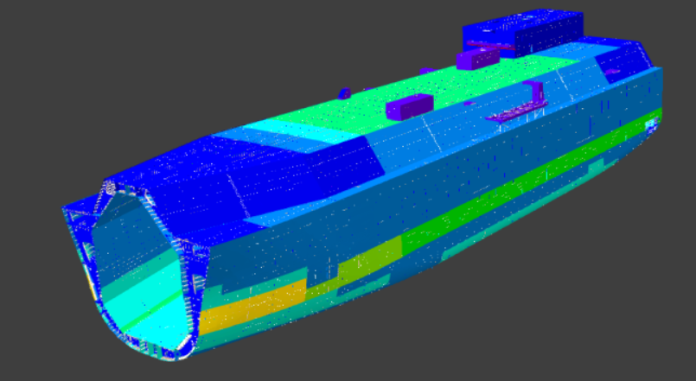Bureau Veritas, a company specialising in testing, inspection and certification, and Hanwha Ocean, specialising in the shipbuilding and offshore industry, have completed a Joint Development Project (JDP) to enable 3D model based approval for the Classification of ships.
More specifically, the JDP tested and validated the workflow of 3D model-based Classification approvals, where classification reviews are directly based on the 3D model provided by the designer instead of using traditional 2D drawings.
Earlier, Hanwha Ocean provided the cargo hold region of one LNG carrier using OCX (Open Class eXchange) format. Based on this 3D model, Bureau Veritas automatically generated the calculation models used in BV’s rule-checking software: MARS (prescriptive rule check) and VeriSTAR Hull (finite element analysis).
In addition, BV provided Hanwha Ocean with access to its web-based collaborative platform (VeriSTAR Project Management) to share comments and the progress of the design review in real-time, according to BV.
Moreover, digital technology is developing rapidly and is applied to all industries, including shipbuilding and marine. BV has developed a 3D model based approval for Classification of ships.
In parallel, Hanwha Ocean has a plan to develop and establish 3D structural design procedures by deploying future digital design paradigm.
Duke Lee, technical director of Hanwha Ocean Co., commented, “Together with Bureau Veritas, we are developing 3D model based ship design procedure using NAPA Designer for improvement of our design capability as well as engineering competitiveness and to achieve one more step toward digital transformation.”







